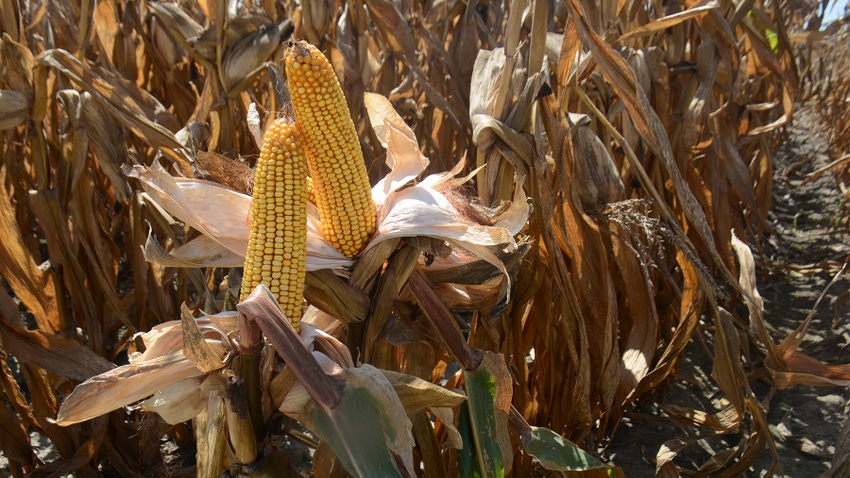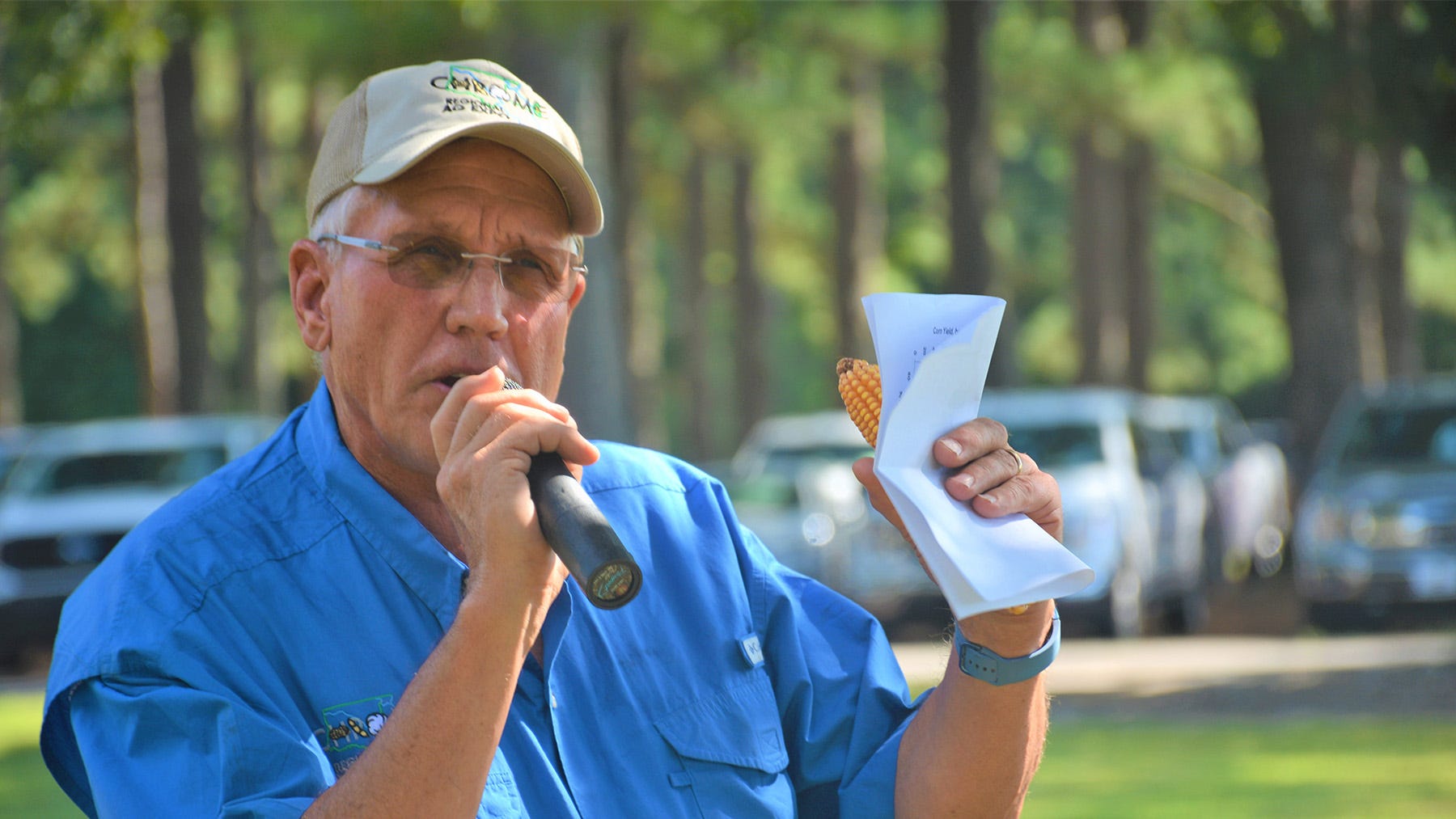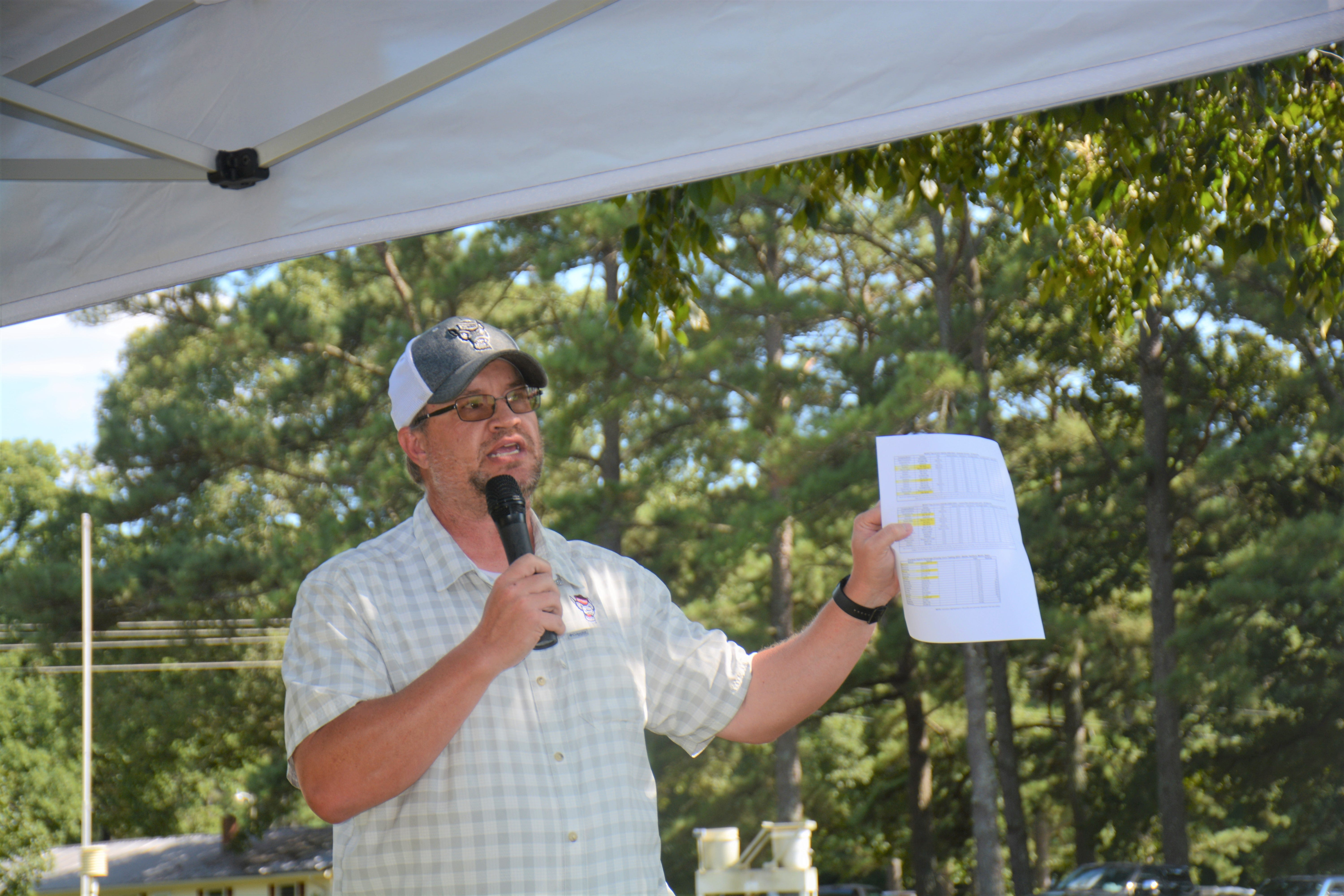
Corn farmers know that picking the right hybrid is key when it comes to producing the best corn crop possible. But it can be daunting due to the hundreds of hybrids they have to choose from.
North Carolina State University Extension Corn Specialist Ron Heiniger urges farmers to scientifically evaluate hybrids that will work best on their farms and environments. Gleaning and evaluating the right data is key.
“When I say scientifically, what I’m talking about is you need to have a plan. There are two things that are important to you in picking that hybrid. One: consistency. I want it to do as good year end and year out as it can,” Heiniger said at the CHROME Regional Ag Expo Aug. 23 at the Peanut Belt Research Station in Lewiston-Woodville, N.C.
“The problem that you face in that is temporal differences in weather. What weather we get this year won’t be the same as next year. Guaranteed. So, you have to have a hybrid that performs well year in and year out.”

North Carolina State University Extension Corn Specialist Ron Heiniger, speaking at the CHROME Regional Ag Expo at the Peanut Belt Research Station In Lewiston-Woodville, N.C. Aug. 23, urges corn farmers to think scientifically when making hybrid selections. (Photo by John Hart)
County data
Heiniger said this job is made easier if farmers turn to the NCSU official variety trials that are managed by Heiniger’s son, Ryan Heiniger, the N.C. State official variety testing program director. The NCSU OVT program for corn has data on more than 100 hybrids from 10 different locations across North Carolina. The data is from a number of years to show consistency of hybrid performance.
The NCSU OVT shows the temporal data, but Heiniger emphasized the importance of also using spatial data, targeted to your specific farm and environment. He said this is harder to do because your farm is different than your neighbor’s farm and your land is different than your neighbor’s land.
Heiniger said the key is to turn to your county data to find the best information on spatial differences and incorporate this with the temporal data gleamed from the OVT. Both are needed when making the best hybrid selection possible.
“This last year what we tried to do is make that data more valuable. In the past, you might have seen a strip trial, one or two or three across an area, and the problem with just one or two or three is they don’t really encompass all of the different locations and spatial data that we have,” Heiniger said.
“We can’t use the data to actually determine differences between the hybrids because we need replicates. Mathematics and statistics say it has to be repeated. We don’t have replicates, so what we’ve tried to do this past year is overcome that by increasing the number of tests and by making sure we have the same hybrids test in and test out.”

Speaking at the CHROME Regional Ag Expo Aug. 23 at the Peanut Belt Research Station in Lewiston-Woodville, N.C., Ryan Heiniger, Ron Heiniger’s son and the N.C. State official variety testing program director, urges farmers to use the N.C. State variety selection tool to help them choose the best corn hybrids for their operation. (Photo by John Hart)
OVT
Ryan Heiniger describes the OVT as a filter for the hundreds of corn hybrids that are available to farmers. In essence, Heiniger said the OVT uses temporal data to filter all varieties by environment to provide hybrid selection criteria for farmers.
“More data is always better. The more data you have the better you are going to make predictive selections for a hybrid that is going to work for your situation. We have 10 locations and 100s of varieties, so we can filter that down to the county level and look at it, not only from different environments but different management approaches,” Ryan Heiniger said.
He said it is critical to always look at multiple year data when making predictive hybrid selections. The corn OVT has hybrids from 2020 to 2022 to provide multiyear data. Ryan Heiniger also stressed that the NCSU variety selection tool is the best resource for searching the corn performance data and finding hybrids best suited for your operation.
“Our goal moving forward is to try to integrate what the agents are doing into the variety selection tool that we rolled out a couple of years ago to make that selection process easier for you. More environments and more data gives you a better opportunity for you to select that hybrid that is going to make the difference in your operation.”
The CHROME Regional Ag Expo is a collaborative effort of North Carolina Cooperative Extension agents in the four counties of the Chowan, Roanoke, and Meherrin River areas: Bertie, Halifax, Hertford, and Northampton Counties.
About the Author(s)
You May Also Like






